Introduction
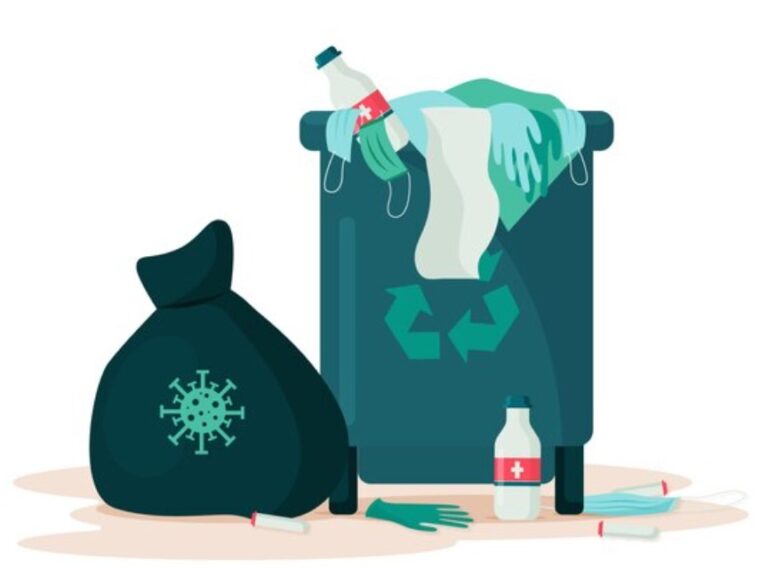
The proper disposal of medical waste is essential for healthcare facilities and organizations. Medical waste improper disposal can have detrimental effects on both the environment and human health. The several categories of medical waste, the dangers of inappropriate disposal, the significance of appropriate biomedical waste management, and the latest advancements in technology and medical waste management best practices are all covered in this article.
Types of Medical Waste
There are several sorts of medical waste, and each one needs to be handled and disposed of according to certain guidelines:
- Infectious Waste: Trash tainted with germs, such as cultures, discarded needles, and bandages saturated in blood.
- Hazardous Waste: Trash, including chemicals, medications, or materials that risk human health or the environment, such as mercury-containing equipment and chemotherapy treatments.
- Radioactive Waste: Radiation-emitting waste products, including contaminated equipment and leftover radioactive materials.
- General medical waste disposal: Paper trash, office supplies, and packing materials are examples of non-infectious waste produced during regular healthcare operations.
Risks and Consequences of Improper Disposal of Medical Waste
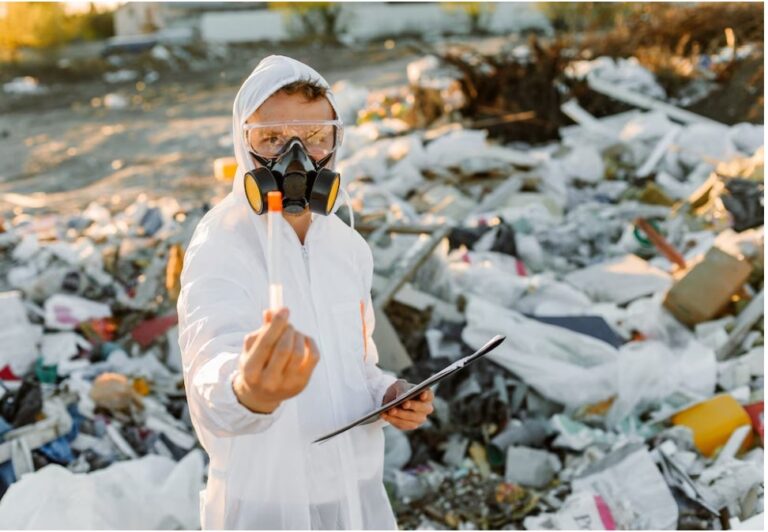
Medical waste improper disposal can have serious negative effects on the environment and public health. The many dangers and repercussions of inappropriate medical waste disposal will be covered in this section, along with the effects on the environment and public health issues that arise, especially when it comes to the disposal of clinical medical waste.
Environmental Impact
- Soil Contamination: Medical waste not properly disposed of may contaminate the soil. If improperly managed or disposed of, medical waste can leak dangerous materials into the ground. Examples of this include contaminated sharps and toxic chemicals. Pharmaceuticals, hazardous chemicals, and infections are a few examples of these materials. These pollutants can pollute groundwater and seep into the soil over time, endangering human health and the ecology.
- Long-term impacts on plant life and agriculture may result from soil pollution. Crops may absorb these dangerous compounds from polluted soil, posing a risk to the health of everyone who consumes the tainted food. Additionally, soil pollution upsets the ecosystem’s natural equilibrium, influencing insects, microbes, and other creatures essential to soil health and biodiversity.
- Water Pollution: One major risk of water contamination is the improper disposal of medical waste. Medical waste may contaminate water sources and endanger aquatic ecosystems and human populations when it gets into bodies of water. This waste includes incorrectly disposed of chemicals, medications, and infectious pathogens.
- Contaminated water bodies may impact marine life and other aquatic species. Waste not properly disposed of may entangle or consume fish and other aquatic species, causing harm or even death. In addition, consuming seafood or drinking water from polluted sources can expose people to dangerous substances such as poisonous chemicals and infections.
Contact us for waste disposal
Public Health Concerns in Clinical Medical Waste Disposal
- Spread of Infections: Infectious medical waste can spread more widely if not handled and disposed of properly. Medical waste disposal, waste handlers, and the general public may be seriously endangered by medical waste that contains germs, such as blood-soaked bandages, used needles, or cultures.
- Diseases can spread if infectious trash is not appropriately disposed of, packed, or handled. For instance, bloodborne infections, including HIV, hepatitis B, and hepatitis C, can be transmitted to waste handlers and healthcare personnel through needlestick injuries brought on by inappropriately disposed of needles.
- Occupational hazards for Waste Handlers: If appropriate safety measures are not followed, handling medical waste by waste management professionals and healthcare workers can result in many occupational dangers. These people run the risk of getting hurt, becoming sick, and coming into contact with dangerous chemicals if they don’t have the proper training, protocols, and personal protective equipment (PPE).
Impact on Community Well-Being
The community’s well-being may suffer due to improperly handled medical waste. Adjacent communities around healthcare institutions or waste management plants may be subject to immediate repercussions from inappropriate disposal methods. Inadequate storage or the presence of medical waste in public spaces can harm communities’ well-being, undermine public confidence in healthcare institutions, and cast a shadow over them. Medical waste can be unpleasant to see and smell, raising worries about possible health hazards in biowaste medical waste management. Furthermore, the incorrect handling of medical waste can result in the stigmatization of people or groups connected to the production or handling of waste. This may worsen a group’s marginalization and isolation, impacting their general well-being and social integration.
Why is Proper Disposal Important for Medical Waste?
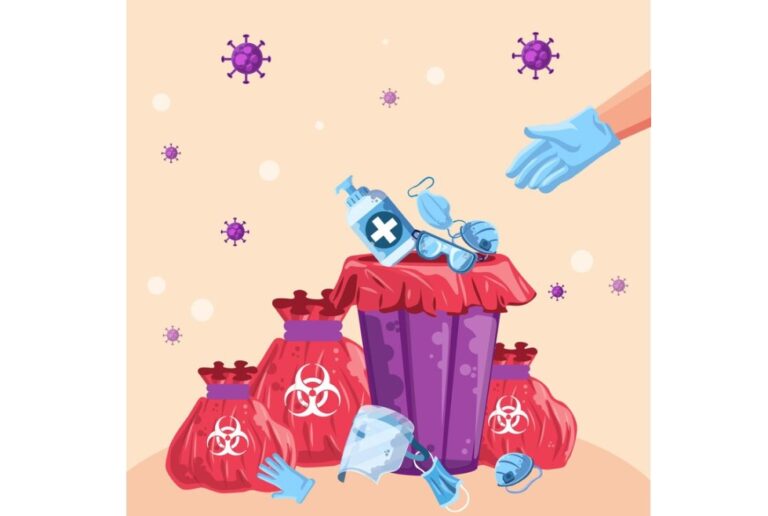
Medical waste disposal is extremely important because of the many inappropriate handling and disposal hazards. Inadequate handling of medical waste can harm the environment, public health, and biomedical medical waste management personnel. The concerns associated with inappropriately disposed of medical waste will be covered in more detail in this part, including potential threats to public health, environmental hazards, workplace risks, and the legal ramifications of breaking the rules.
Public Health Threats
The spread of infectious illnesses is one of the main dangers associated with inappropriate medical waste disposal. Medical waste, particularly infectious, could include germs that can cause life-threatening diseases, including bacteria, viruses, and parasites. Healthcare personnel, trash handlers, and the general public may become infected if this material is not managed and disposed of appropriately.
Bloodborne pathogens, including HIV, hepatitis B, and hepatitis C, can spread through needlestick injuries, which can be caused by infected sharps and discarded needles. In addition to contaminating other waste streams, improperly handled infectious waste poses a risk of exposure to waste handlers and anyone touching the material.
Contact us for waste disposal
Environmental Dangers
The environment may suffer if medical waste is not disposed of properly. Hazardous items such as chemicals, medications, and possibly infectious materials can be found in medical waste. These materials can potentially harm our air, water supplies, and soil if they are not properly managed.
- The ecology may be impacted by contaminated soil in the long run. Contaminants and hazardous substances can seep into the earth, contaminating groundwater and perhaps influencing potable water sources. Plants and crops may get contaminated, endangering agricultural practices and food safety.
- Another serious effect of inappropriate medical waste disposal is water contamination. Medical waste can contaminate water supplies and endanger aquatic life if it enters rivers, lakes, or the ocean. Inappropriately disposed trash can potentially entangle or consume marine life, causing harm or even death. Furthermore, using tainted water for bathing or irrigation might harm people’s health.
- Pollutants and hazardous gases can be released into the atmosphere using improper biowaste medical waste management techniques, such as open burning or cremation, without adequate emission controls. These emissions add to air pollution, which degrades air quality and may put the residents in surrounding areas at risk for respiratory issues.
Occupational Hazards
Healthcare professionals and waste management personnel face serious workplace dangers due to improperly handled medical waste. These people handle and dispose of medical waste daily and run many hazards if correct processes and measures aren’t followed. Nurses, physicians, and laboratory technicians are among the healthcare professionals who handle medical waste directly and run the risk of needlestick injuries, wounds, and exposure to infectious pathogens. Their health and well-being may be at risk due to the spread of infections and illnesses brought on by these injuries. Likewise, workers in waste management who gather, move, and handle medical waste are exposed to work-related risks. These personnel risk coming into touch with contagious materials, dangerous chemicals, or sharp items if garbage is not properly packaged and separated. Injuries, infections, and long-term health problems may result from this.
Legal Implications
Healthcare facilities and organizations may face legal repercussions if medical waste is improperly disposed of. Strict policies and procedures are in place at government and regulatory organizations to guarantee the appropriate and safe handling of biomedical waste and management. Fines, penalties, and harm to the healthcare facility’s reputation may arise from breaking these requirements. When appropriate disposal procedures are not followed, it may result in inquiries, lawsuits, and even the closure of medical institutions. Furthermore, healthcare providers and waste management staff who use inappropriate medical waste disposal techniques may face legal repercussions.
Technologies and Best Practices in Medical Waste Disposal
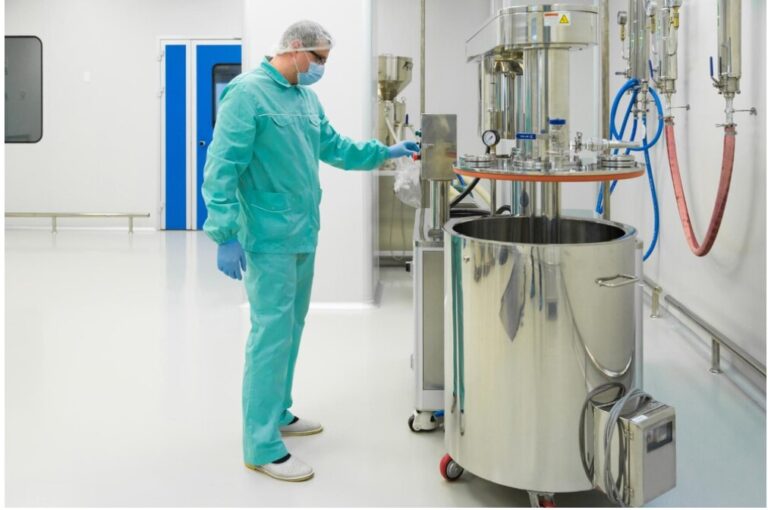
A variety of technologies and best practices are used to ensure the safe and efficient disposal of medical waste:
Advanced Medical Waste Treatment Methods
Autoclaving: This procedure sanitizes medical waste using high-pressure steam, allowing it to be safely disposed of in conventional waste streams. Incinerating medical waste at high temperatures reduces it to ash and gases by thermal treatment. Cutting-edge incineration techniques reduce emissions and seize contaminants.
Chemical Treatment: Pathogens in medical waste can be neutralized by chemical disinfection techniques such as chlorine compounds or other disinfectants.
The Future of Waste Management: Trends and Technologies in Recycling
Importance of Segregation and Proper Packaging in Medical Waste Disposal
It is crucial to properly separate the various categories of medical waste disposal at the time of creation. Regulations and rules should be followed while classifying, separating, and packaging waste to guarantee safe handling and disposal.
Community Education Initiatives in Biomedical Waste Disposal
Programs for community education are essential for raising knowledge and comprehension of safe disposal procedures for medical waste. Through these biomedical waste disposal programs, healthcare personnel, trash handlers, and the general public may learn the value of adhering to regulations, encouraging good waste management practices, and reducing the hazards involved in incorrect disposal is essential to properly dispose of biomedical management waste to safeguard the environment and public health. Healthcare facilities and institutions must thoroughly understand the many forms of medical waste, the dangers of inappropriate disposal, and the significance of implementing best practices and suitable technology. The safe and efficient disposal of medical waste may be ensured by following rules, educating stakeholders, and implementing efficient waste management techniques. This will reduce hazards and improve the health of people and the environment.
Future Perspectives of Biomedical Waste Disposal
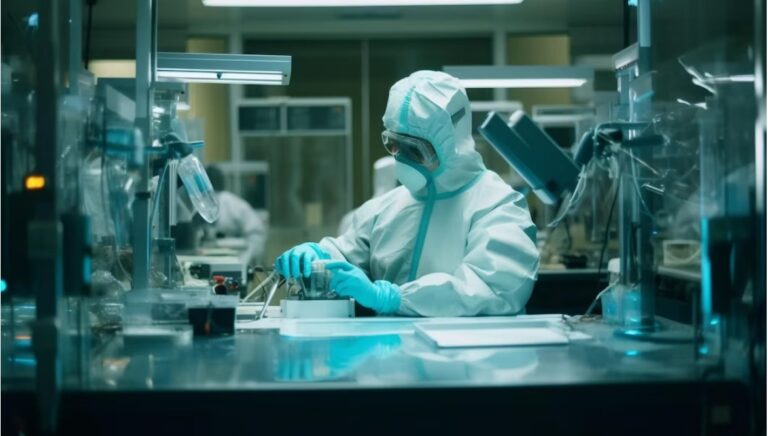
Emerging Technologies in Medical Waste Management
Technological developments in the medical waste disposal field appear promising. New technologies are being created to enhance medical waste management’s sustainability, safety, and efficiency. Innovative methods of sterilization and disinfection are being investigated, including heat treatment, microwave irradiation, and sophisticated chemical reactions. By reducing the amount of medical waste that has to be disposed of safely, these technologies seek to guarantee the total eradication of viruses.
Waste-to-Energy Conversion: Bioenergy and waste-to-energy conversion technologies are drawing interest as viable approaches to managing medical waste. Using techniques like anaerobic digestion or incineration with energy recovery, organic waste may be converted into energy sources like biogas or electricity. This method can provide renewable energy and lessen the negative effects of garbage disposal on the environment.
Automation and Robotics: Technologies in this area can potentially improve waste management procedures. By increasing efficiency in trash sorting, packing, and transportation, automated methods can lower the chance of workplace risks and human mistakes. These technologies can also improve trash tracking and monitoring along the disposal chain.
Collaborative Efforts for Global Solutions
Taking up the problems associated with the disposal of biological waste calls for international cooperation. Developing comprehensive and sustainable solutions requires collaboration between international organizations, governments, waste management agencies, and healthcare facilities.
Information Sharing and Best Practices: By exchanging best practices, experiences, and information across nations and organizations, identifying successful medical waste management solutions may be aided. International cooperation and information sharing can aid in creating uniform policies, procedures, and rules that support appropriate disposal methods.
Training and Capacity Development: Funding training and capacity development initiatives for waste-segregation handlers, healthcare professionals, and other pertinent stakeholders is essential. Those engaged in garbage disposal can become more competent and knowledgeable if they receive thorough instruction and training on safe procedures, cutting-edge technology, and appropriate waste management techniques.
International Funding and collaboration: Financial assistance and collaboration are essential for emerging nations or areas with few resources. Effective waste management systems may be established in locations that confront major obstacles with the support of international organizations, wealthy nations, and collaborative projects.
Importance of Research and Innovation
The future of biomedical waste disposal is heavily influenced by ongoing research and innovation. Research & development expenditures have the potential to provide new materials, technologies, and processes that enhance waste management procedures and lessen their negative effects on the environment.
Sustainable Materials and Packaging: Developing sustainable materials and packaging for medical items must be the main emphasis of research activities. The ecological impact of medical waste may be lessened by using biodegradable and eco-friendly materials, and creative packaging ideas can enhance trash retention and separation.
Waste Reduction and Minimisation: One important field of study should be promoting waste reduction and minimization techniques. This bio-waste disposal entails looking at methods to streamline inventory control, reduce medical supply overuse, and implement recycling initiatives in healthcare institutions.
Data Analysis and Optimisation: Data analytics and optimization methods may increase waste management effectiveness. Researchers can spot areas for development and put into practice efficient medical waste reduction, segregation, and treatment solutions by examining waste creation trends, resource allocation, and disposal procedures.
Conclusion
In summary, there is much room for technological, collaborative, and scientific breakthroughs in biomedical management waste. Emerging technologies like robots, waste-to-energy conversion, sterilization, and disinfection can completely transform hospital waste management techniques. Cooperative efforts and international collaboration are essential to exchange information, develop capacity, and discover worldwide solutions to the problems associated with medical waste disposal. Moreover, developing sustainable materials, waste reduction plans, and data-driven optimization methods depends heavily on ongoing research and innovation. We can save the environment, maintain public health, and move towards sustainable waste management in the healthcare industry by realizing the hidden risks associated with inappropriate medical waste disposal and putting appropriate disposal procedures into place. Our common duty is to act and change to sustainable behaviors that put the environment’s and our communities’ health first.

